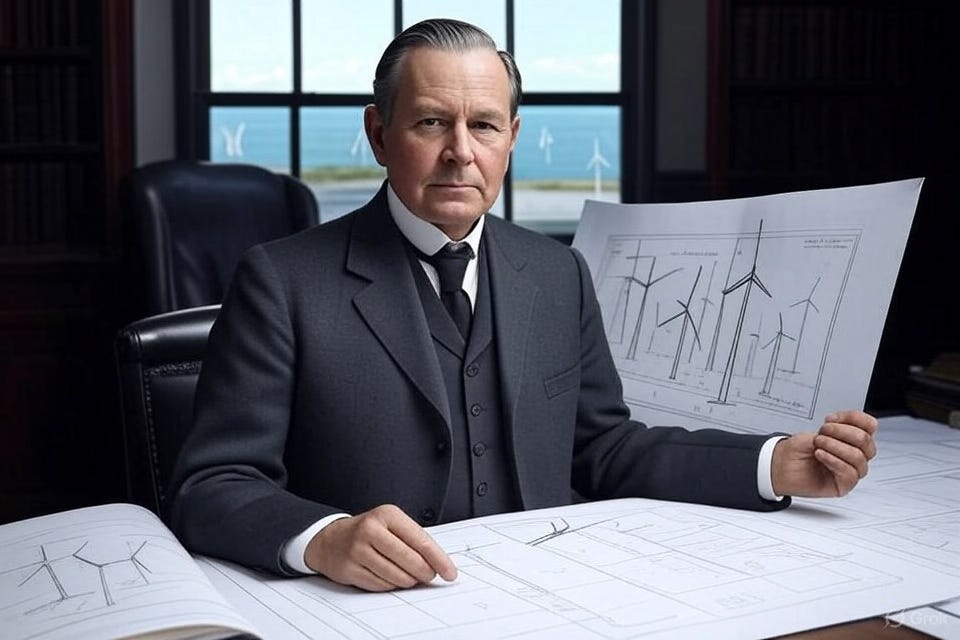Offshore Wind Is Running Out of P.T. Barnum's Suckers, and Is Looking for More But They're Not There
A recent article in The Conversation tells us that even green energy zealots are now admitting the whole thing was a scam. They can’t make a profit without massive subsidies offered up in pursuit of the impossible green dream. They’re blaming lack of boats, copper prices, lack of investors, ornery mothers-in-law, and anything else they can spin, but the truth is this: it was never profitable. The whole thing depended on P.T. Barnum’s suckers. That would be those who spend out tax money and write laws.
Oh, the grifters don’t say it was just a grift, of course, but that’s the import of their words. Consider the following excerpts:
The UK government’s strategy for tackling climate change received a major blow in May when Danish developer Ørsted announced that adverse economic developments had halted its 2.4 gigawatt (GW) Hornsea 4 wind farm in the North Sea.
The government aims to generate at least 43GW of offshore wind power (current capacity is 14.7GW) and 95% of all energy from renewable sources by 2030.
These targets are now in jeopardy. The cancellation of Hornsea 4 follows a similar decision by Swedish developer Vattenfall, which stopped work on its 1.4GW Norfolk Boreas wind farm in 2023…
Building a wind turbine requires significant amounts of steel, copper and aluminium, all of which doubled or tripled in price between 2020 and 2023. Turbine manufacturers have raised prices in an effort to recover recent losses. This affects the profitability forecasts of wind energy developers like Ørsted and the viability of each of their projects.
Impending national and international net zero targets also mean that developers globally are having to make earlier investments in transmission infrastructure. An exponential increase in demand for scarce high-voltage cabling has already led to high-profile cancellations of offshore wind farms in the US.
Rising demand for rare earth metals used to make magnets in turbine generators has also been snared by geopolitical issues. The mining, processing and refining of these metals is dominated by China, which manufactures over 90% of these magnets…
Rising costs mean that even one of the world’s biggest wind farms, Dogger Bank in the North Sea, will not be profitable for its developer, Equinor. As a prospect for generating financial returns, renewable energy still cannot compete with oil and gas.
This is the key argument of economic geographer Brett Christophers in his recent book The Price is Wrong. Christophers argues that, if national governments continue to rely so heavily on private sector investment to build renewable energy, decarbonisation is unlikely to proceed as fast as it needs to. It is simply not profitable enough…
If something does not change to mitigate costs and increase returns for developers, the government’s 2030 target is in doubt.
So, offshore wind energy is unprofitable. Who would have imagined it? Well, anyone with a brain, of course. It's been obvious for decades offshore wind makes no economic sense, but it sure is nice to see the wind developers put their begging hands out for all to see, isn't it? They’re grifters playing off the West's obsession with decarbonizing a world dependent on carbon for all matters of life.
Hat Tip: JoNova
#Climate #OffshoreWind #WindEnergy #UK #Copper #Vessels






Developers are all too anxious to start up projects to collect massive subsidies but are even more quickly moving to cancel those projects prior to completion but keeping the subsidy. What a model for grifting! Having been rewarded for this behavior developers are trying to leverage more free money on every project. It won’t work but has cost a lot of money to date. Just say no!
In Massachusetts, they are calling, in so many words, for Massachusetts to pay what the subsidies will not! They definitely have their hands out and are pulling on people's climate fear heartstrings.